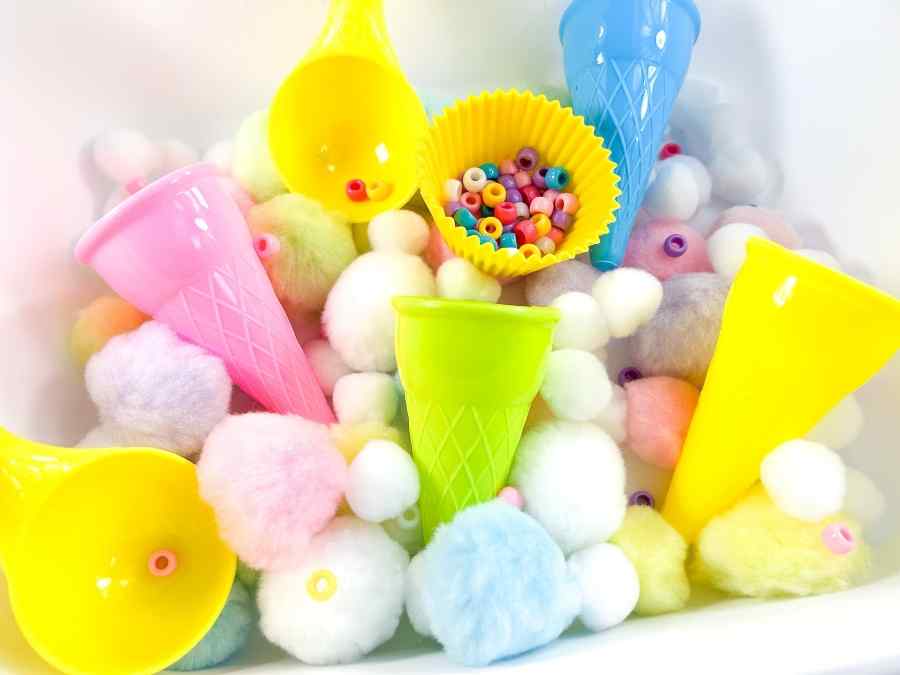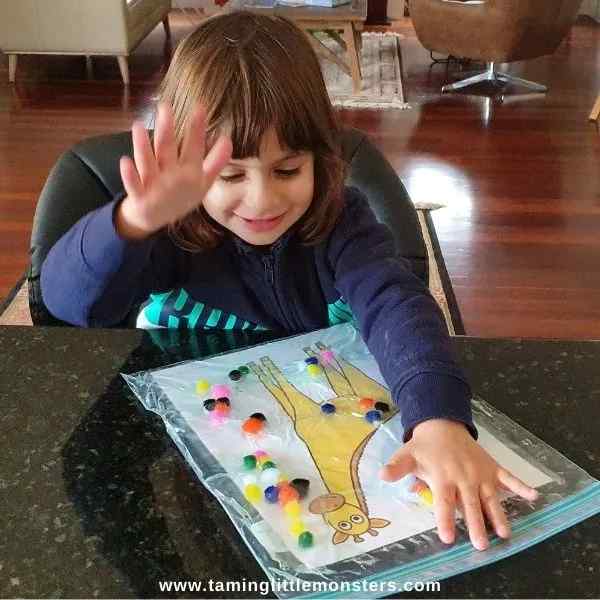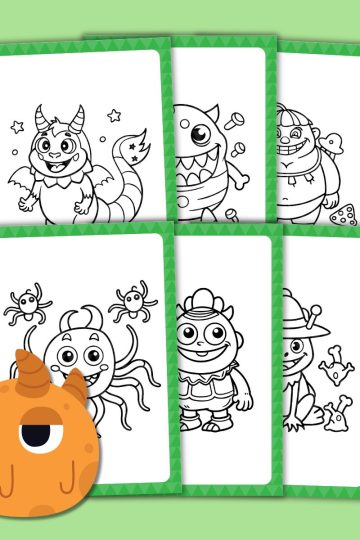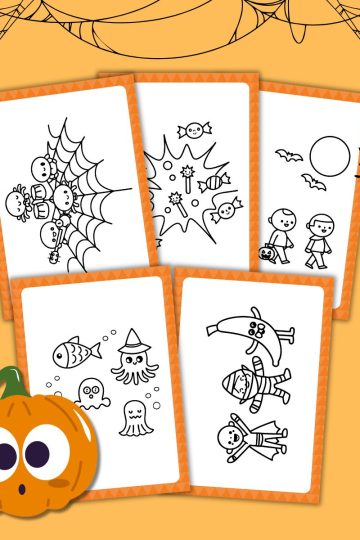Sensory Activities for Kids Under 2
For children under 2, every new sight, sound, smell, taste, and touch is a big learning experience, and that's exactly why sensory activities are super important at this stage.
What's more, these activities aren't just about fun and engagement but also help build more nerve connections in the brain, enhance motor skills, boost language development, improve social skills and foster cognitive growth.
They can be a tad bit messy, but they're absolutely worth it.
Jump to:
How Sensory Play Helps Young Kids
Sensory experiences are crucial for growing children, especially children under 2. It is how they learn and interact with the world.
These activities tickle the brain, create neural pathways that are essential for all types of learning and also help calm anxiety by naturally soothing the nervous system.
When children engage in activities that stimulate their senses, they develop an better understanding of objects, learn cause and effect, and even start to build language skills.
Another big plus is the fact that these activities aid the development of fine and gross motor skills, as children reach, grasp, pour, and scoop.
I'm guilty of never being one of those moms who set up those cute-looking sensory bins and bottles- I so wish I could go back in time, try out a few simple ones, and let my kiddo explore in full swing!
How to Set Up a Sensory Bin
If you plan smartly, setting up a sensory bin is actually pretty simple and easy. You don't need any expensive materials, and with stuff in your house, you'll be able to create a nice sensory experience for a little one.
Here's the bare minimum you'll need.
Container
Start off with any large, shallow container- it doesn't have to be transparent too.
The idea is that it should just be wide and deep enough for your child to explore without the contents spilling out, so of course, less mess to clean up!
I'm a big fan of anything and everything that serves a dual purpose, which is why, I absolutely love these bins.
They come in a pack of 4, and are perfect not just for sensory play, but also for storing small toys and objects, flash cards and art and craft materials.
Anti-break storage organizers that double up as sensory bins. Perfect for storing small toys, flash cards, sensory activities and more!
Fillers
Fillers are the base for your sensory play setup. These can be anything- rice, beans, sand, clay, foam and even water.
For children under 2, you can set up sensory play stations with a taste-safe base like edible pasta.
Tools
Now's your chance to get creative and have some fun!
Add in spoons, funnels, scoops and other tools that allow children to pick up, pour, dump and transfer the fillers around.
You can, of course, use what you have at home, but I would recommend in this small pack of sensory scoops. They last super long and are great for any kind of sensory bin activity.
The perfect scoops, spoons and manipulatives for your sensory bins and setups. Beautiful colors, study and durable!
Small Items
Small toys, leaves, shells, pebbles, cars and other objects are great to add to your sensory bin.
You can, of course, go the Pinterest mom route and set up themed sensory play bins if you want to, but there's no harm in keeping it super simple too really.
Safe Space
This one's so underrated, yet so important when it comes to setting up a sensory play area for your kiddo.
Pick a corner in your home that's easy to access and clean, and safe too.
Lay out a plastic sheet to tackle any accidental spills, and that's pretty much it.
If all this seems to be too much for you to take in, you can always start small and experiment with a sensory bottle instead of setting up a sensory bin.
If you're anything like me, and love your shortcuts, I would recommend starting off with this sensory bottle kit. It is a great way to start off with sensory play, and for $15 bucks, you can't go wrong.
Build your own water sensory bottle with this kit! Packed with high quality materials perfect to make beautiful sensory bottles with no effort!
Safety During Sensory Play
When it comes to sensory play for kids under 2, you'll need to make sure you exercise safety.
You'll need to supervise to make sure there's no choking hazard or that your child accidentally ends up ingesting something that's non-edible.
I would recommend adding medium sized items in the bin- just to be safe.
Themed Sensory Play
Themed sensory bins are so fun and interesting, especially for toddlers and kids getting closer to their 2nd birthday.
Now's the time they're able to make sense of the world around them, form connections, learn letters and do so much more.
You can spend a few extra minutes here thinking about a good theme for the sensory bin.
Here are a few good ideas to get you started.
- Ocean animals
- Farm animals
- Construction zone
- Space
- Dinosaurs
- Winter animals
- Alphabets ABC
- Numbers 123
- Unicorns
- Garden
- Bugs
- Birds
- Fall
- Beaches
- Apples
- Christmas
- Halloween
- Colors
The options are literally endless, and you can tweak things around based on what you have at hand.
I love these pre-made sensory bins that come with all the bells and whistles, and even the bin- all for $15. They've got so many different options to pick from too!
Construction themed sensory play box for young learners. Packed with high quality materials, perfect for hours of imaginative play.
Carefully selected high quality materials and a sturdy and durable bin perfect for sensory play. Garden themed play box that strengthens fine motor skills.
Sensory Play For Different Ages
If you're setting up a sensory bin for the first time, you might want to tweak your approach a bit, based on how old your child is.
6-12 Months
Children who've just learnt to sit and are inching closer to their first birthday can benefit a lot from sensory play, but at this point, it is best to include larger toys and additions to your bins, and keep it super simple.
I would recommend opting for taste-safe sensory bin fillers, or just sticking to plain old water.
All of this, of course, has to be supervised too.
There are lots of other ways to sneak in sensory play for younger children. Touch and feel books, little objects, and even these sensory tiles, which are perfect for children between 6 months to 5 years!
12-24 Months
Kids over 1 year of age can benefit from more complex sensory bins that have a lot of objects to explore.
You can now throw in those tools that allow them to scoop, pour and transfer things from one area to another.
These help develop fine motor skills and hand-eye coordination, among offering other benefits.
Making Sensory Play Fun
It is important to note that sensory activities aren't just about physical development- they also play a role in emotional regulation.
Sensory bins can actually be a soothing and calming experience for younger children in specific, helping them learn how to self-regulate.
Remind yourself that it might take your toddler some time to understand the idea of playing, and not putting stuff in their mouth, and not pouring stuff out of the bin.
Yes, they may be little, but sensory bins are a great way to introduce kids to the concept of boundaries. If you find them pouring stuff out, gently guide their hands back inside the bin, point inside and help them understand.
Keep doing this, and it'll catch on sooner than you'll expect.
Sit down on the floor, get your hands dirty with them, and help them experience the joy in it. Make it a nice 'we'll do it together' adventure for you and your kiddo.
Enjoyed thus post? Don't forget to check out some more fun activities, free printables and book recommendations for your toddler.





















Comments
No Comments